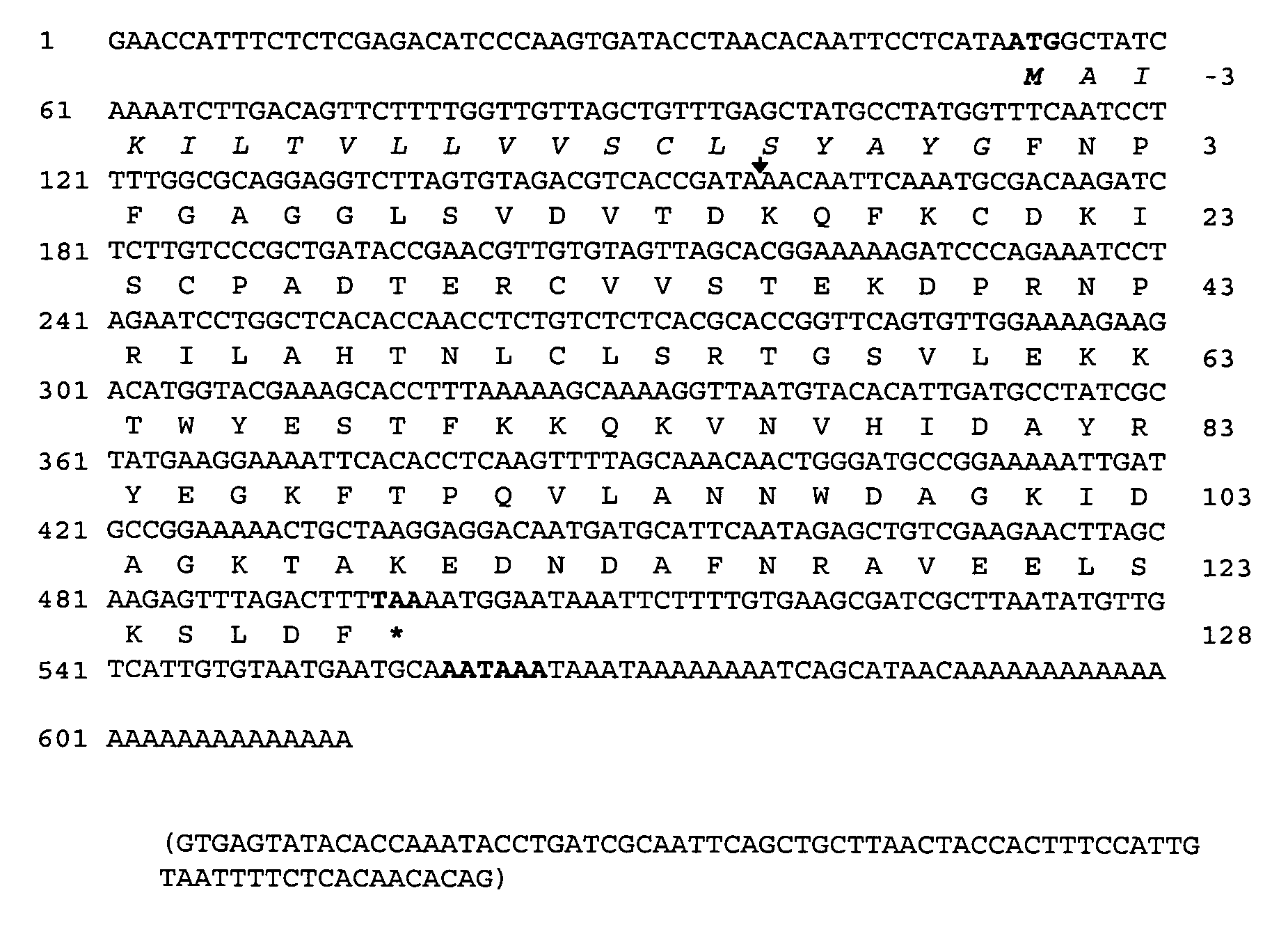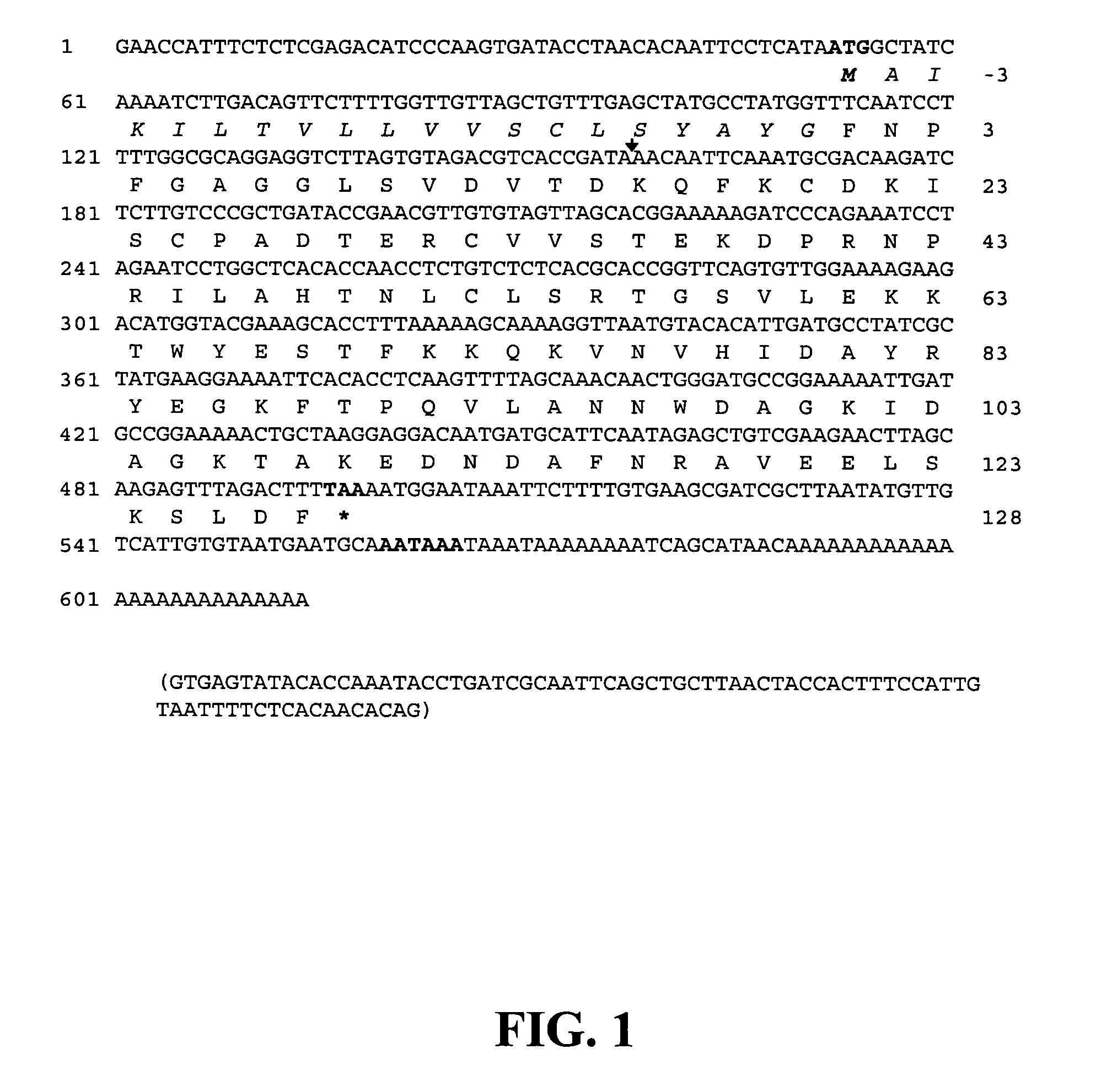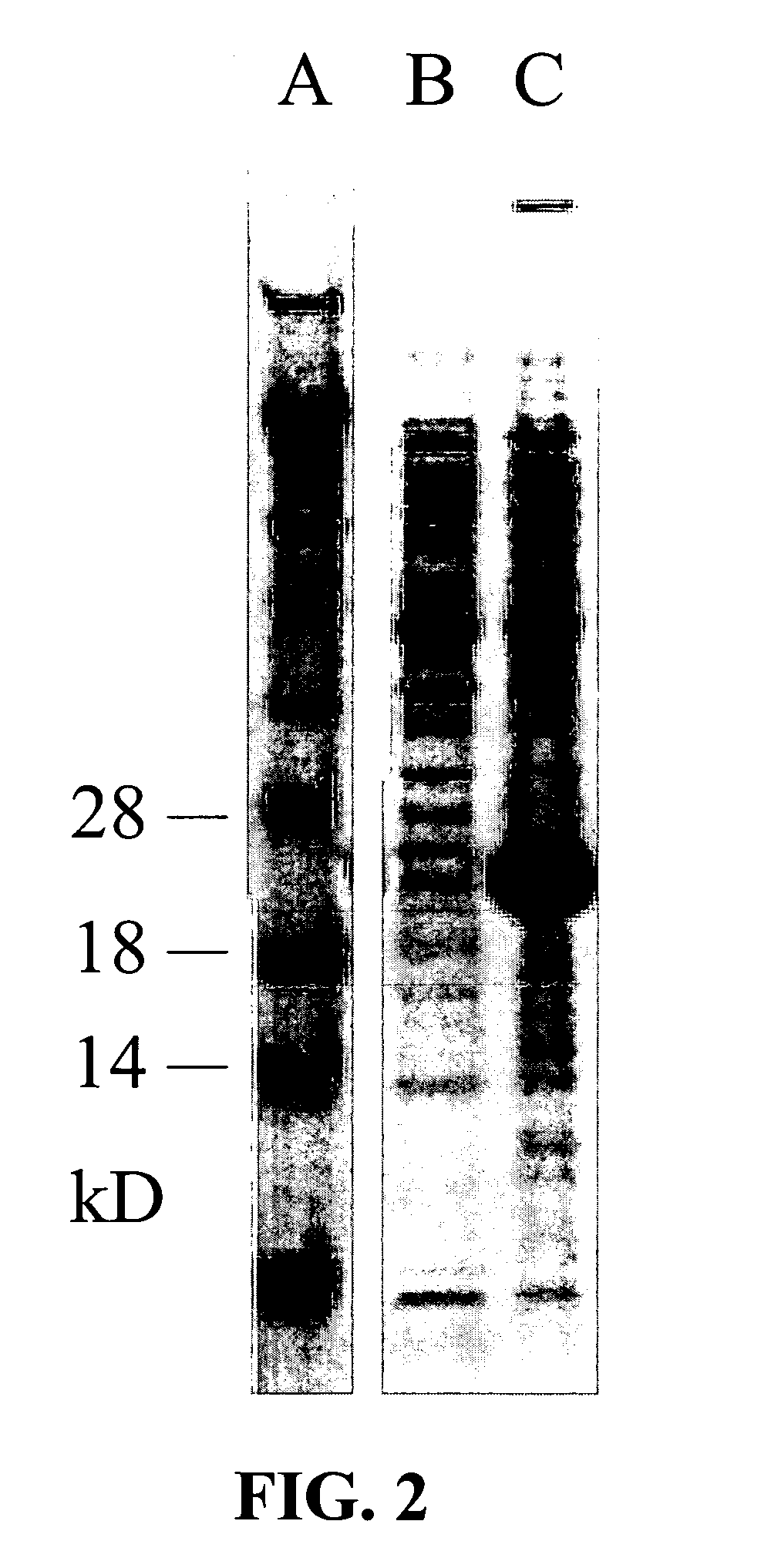Protein from horn fly saliva that disrupts hemostasis
a technology of horn fly saliva and hemostasis, which is applied in the field of veterinary vaccines, can solve the problems of thrombosis, thrombosis formation, and significant increase in water consumption and urine production, and achieve the effects of preventing blood feeding (haematophagy), preventing and/or treating thrombosis
- Summary
- Abstract
- Description
- Claims
- Application Information
AI Technical Summary
Benefits of technology
Problems solved by technology
Method used
Image
Examples
example 1
of Haematillogen Protein
Collection and Rearing of H. irritans
[0083]Pupae were shipped from the U.S.D.A. Livestock Insects Research Laboratory in Kerrville, Tex., on a biweekly basis and stored at 4° C. until needed. They were removed and placed in cardboard cartons, modified from pint-sized ice cream cartons (Neptune Paper Products, Inc., Newark, N.J.) in an incubator set at 27° C. with 16:8 hours (L:D) to promote emergence of adults. An absorbent cotton pad was placed on top of each cage and used as a wick to supply water to adults until time of experimentation, between 24–48 hours post-emergence.
[0084]Wild-caught adults collected from the University of Arizona dairy herd and from the Auburn University beef and dairy herds were used for some assays. They were transported to the laboratory within an hour of collection and maintained as above prior to experimentation.
Recovery of Salivary Glands
[0085]Both sexes of H. irritans are obligate blood feeders and their salivary glands are s...
example 2
nd Expression of Haematollogen
[0088]Salivary glands dissected from field-collected horn flies were used to isolate total RNA using a NucleoSpin RNA II kit (BD Biosciences Clontech). Two cDNA populations (5′-RACE-Ready cDNA and 3′-RACE-Ready cDNA) were generated with 1 μg of total RNA using SMART™ RACE cDNA Amplification kit (BD Biosciences Clontech). A 3′-RACE reaction was performed using 3′-RACE-Ready cDNA as template. Amplification primers that were gene-specific and degenerate were designed based on the partial amino acid sequence of the protein. The amplified DNA product, which resolved as a single band after agarose gel electrophoresis, was purified and directly sequenced. The 3′-end sequence was then used to design a reverse gene-specific primer, which was used to perform 5′-RACE using 5′-RACE-Ready cDNA as template. The resulting DNA product was sequenced and confirmed to correspond to the isolated protein; the apparent full-length gene was then cloned into pCR4-TOPO® ...
example 3
n of Antibodies
[0094]A New Zealand White rabbit was immunized by injection at 5 sites intradermally and 5 sites subcutaneously with a total of 50 μg of recombinant haematollogen which had been expressed in the Rosetta strain of E. coli as described above and then emulsified in Freund's Complete Adjuvant (FCA). Two immunization boosts of 50 μg recombinant haematollogen, emulsified in Freund's Incomplete Adjuvant (IFA), were injected at 4 sites intramuscularly on days 14 and 35 after the initial priming injection. This procedure resulted in the production of antibodies that bind to haematollogen, as confirmed by Western blotting (see FIG. 4).
PUM
| Property | Measurement | Unit |
|---|---|---|
| temperature | aaaaa | aaaaa |
| temperature | aaaaa | aaaaa |
| pH | aaaaa | aaaaa |
Abstract
Description
Claims
Application Information
 Login to View More
Login to View More - R&D
- Intellectual Property
- Life Sciences
- Materials
- Tech Scout
- Unparalleled Data Quality
- Higher Quality Content
- 60% Fewer Hallucinations
Browse by: Latest US Patents, China's latest patents, Technical Efficacy Thesaurus, Application Domain, Technology Topic, Popular Technical Reports.
© 2025 PatSnap. All rights reserved.Legal|Privacy policy|Modern Slavery Act Transparency Statement|Sitemap|About US| Contact US: help@patsnap.com



